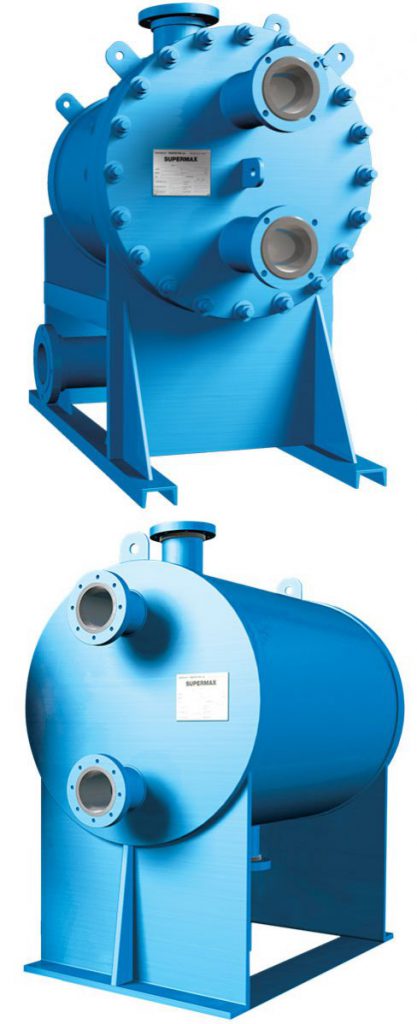The SUPERMAX® Shell And Plate Heat Exchanger is designed as a performance upgrade over shell and tube, block-type welded and brazed aluminum heat exchangers. The unit can overcome footprint constraints, extreme pressures/temperatures, fouling/scaling conditions and corrosive attack with liquids, gases, steam and two-phase mixtures.
Reduced Footprint
Compact size and low installed weight, especially when filled
WIDE TEMPERATURE/PRESSURE RATINGS
Good performance with natural refrigerants such as ammonia and carbon dioxide
EXCELLENT THERMAL PERFORMANCE
Close temperature approach of 1ºC (2°F) --similar to that of gasketed plate heat exchangers

OUTSTANDING UPTIME
Highly turbulent flow produces high heat transfer efficiency and limits fouling, or freezing in refrigeration/cryogenic service
SMALL HOLD-UP VOLUME
Fast start-ups and close following of process changes; low refrigerant charges for refrigeration and cryogenic service
TWO-PHASE FLUID FLEXIBILITY
Extended-thermal-length oblong plates expand capabilities to wide-ranging evaporation and condensing applications
Related Shell And Plate Applications
Related Shell And Plate Services
How The SUPERMAX Shell And Plate Heat Exchanger Works
- The shell and plate welded heat exchanger has a heat transfer element composed of round or oblong chevron-type plates welded into a cassette by a porthole perimeter weld
- Cassettes are placed together and welded to each other using a perimeter weld
- The thermal element subassembly then has metal shell-side flow diverters, nozzles and an end plate welded to it
- An exclusive cage structure, welded only to the end cover, surrounds and supports the plate core pack assembly
- The finished exchanger is a pressure vessel of high integrity, with an accordion-like core that is highly tolerant of thermal expansion
Shell And Plate Vs. Shell And Tube In Equivalent Duties
| Model | Required Surface Area, m2 (ft2) | Footprint Area, m2 (ft2) | Dry Weight, kg (lb) |
|---|---|---|---|
| TEMA Shell And Tube | 203 (2,187) | 9 (100) | 6,350 (14,000) |
| SUPERMAX Shell And Plate (SPW-55) | 56 (600)* | 0.7 (8) | 726 (1,600) |
*Common HVAC water–water application—10°F approach.
